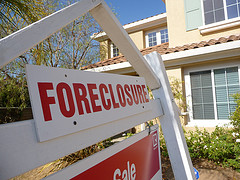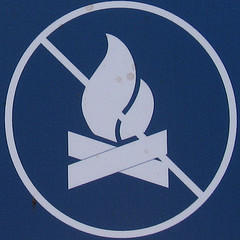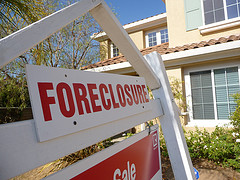
Posted on 25 March 2009. Tags: Debt Management, debt management expert, hardship letter, hardship letter for loan modification, Loan Modification, NOD
Here is a specific example of a hardship letter you could use for a loan modification if you fa ll behind in your payments. For a little more detail on putting a hardship letter together see: Tips on How to Write a Hardship Letter for a Loan Modification or Short Sale.
ll behind in your payments. For a little more detail on putting a hardship letter together see: Tips on How to Write a Hardship Letter for a Loan Modification or Short Sale.
A hardship letter is a letter written to your bank or mortgage company telling them why you can no longer afford to make the payments on your home. This letter describes your hardships and specifically what has happened that caused you to fall behind.
Based on the current credit environment, hardship letters are being used as a tool to help homeowners avoid foreclosure on their homes. The result can be a modification of the loan or the acceptance of a real-estate short sale by the bank.
Sample Hardship Letter for Loan Modification:
(Date)
To Whom It May Concern:
Our family purchased our home in (Date).
Since that time, a number of unfortunate circumstances have impacted us. These circumstances combined with the rising costs of food and the economic slow down have caused us to be delinquent on our mortgage payments. We love our home and want to stay in it and would like you to consider working with us to modify our loan.
In the last few months our financial situation has gotten difficult. Specifically, (This is where you need to explain the specifics of your situation. Example: Our adjustable interest rate went up and our payments increased from $x to $y, lost one of our jobs, medical emergency….). As a result of these unfortunate circumstances we can no longer afford our mortgage payments.
We feel that if we could get our loan modified, we would be in a better situation and could make our payments. We would appreciate if you can work with us to lower our payment so we can keep our home.
We have enclosed copies of our financial statements.
(You would attach copies of proof of income {paycheck stubs…}, Proof of hardship {late notices you received recently}, Bank Statements for last 2 months, past 2 years income tax return)
We appreciate all of your help as our family goes through these hardships.
Sincerely,
Home Owner Name(s) ___________________
Signature_____________________
Loan # ______________________
Address______________________
Phone________________________
Posted in Hardship Letters, Loan Modification, Tips & Tools for a Loan Modification

Posted on 16 March 2009. Tags: Debt Management, debt management expert, Foreclosure, hardship letter, loan, Loan Modification, mortgage, mortgage modification, Notice of Default, Short Sale
 If you are having trouble keeping up with your mortgage payments and find yourself needing foreclosure help, you are not alone. Millions of homeowners have lost their homes due to foreclosure over the last few years. In 2008 alone, over three million foreclosures occurred in the United States. If you are in foreclosure now, what should you expect and how can you manage this stressful situation?
If you are having trouble keeping up with your mortgage payments and find yourself needing foreclosure help, you are not alone. Millions of homeowners have lost their homes due to foreclosure over the last few years. In 2008 alone, over three million foreclosures occurred in the United States. If you are in foreclosure now, what should you expect and how can you manage this stressful situation?
What is Foreclosure?
Foreclosure, also called default on a mortgage, occurs when a borrower fails to meet the terms of a mortgage secured by real estate. Usually, the first stage of default is delinquency caused by a late payment.
If a borrower continues a delinquency and fails to make the scheduled payment and subsequent payments, the mortgage company will begin the foreclosure process by filing a Notice of Default (NOD). This is a public notice filed in the home’s county recorder that describes the borrower’s default, as well as confirms the lender’s intention to foreclose on the home if the mortgage is not promptly brought up to date.
How Does the Foreclosure Process Unfold?
The process of foreclosure after the NOD is different from state to state. Some states have requirements that mortgage lenders give plenty of time for a borrower to redeem the mortgage and keep their home. This process can take up to a year and even up to two years from the beginning process of foreclosure until a defaulted homeowner is evicted and the house sold at auction. Some states, on the other hand, allow lenders to give little time for loan redemption, and the final foreclosure could occur in less than a year.
However, all homeowners in the foreclosure process can expect many letters from the lender and the lender’s attorney asking and demanding that the loan is paid, even while they are pursuing foreclosure. Once a homeowner fails to redeem their loan during the NOD timetable, the mortgage lender proceeds with asking for a judicial or non-judicial (depending on state laws) home sale and auction to recover their losses. As mentioned, a foreclosure auction sale could be months, even a year or more, after the first delinquency.
What Are Alternatives To Foreclosure?
If a homeowner truly wants to keep their home, they should talk with their lender about alternate solutions. Here are some possibilities to avoid foreclosure:
- Loan Modification – Negotiate with the lender to change the interest rate or other terms that can effectively lower a monthly mortgage payment to a more affordable level. You will have to detail your financial statements and present a hardship case and hardship letter to your bank.  Sometimes this may require the help from a professional mortgage modification specialist company.
- Forbearance – In some cases, a mortgage lender may be willing to issue forbearance on payments for a limited time, usually three to six months, giving the borrower time to get caught up on his finances.
- Short Sale – If a borrower cannot financially afford the mortgage any longer, he or she may be forced to sell the home in order to pay the mortgage in full. However, what if the final selling price is less than what is owed on the mortgage? A mortgage company may agree to a “short sale,†where they accept the market price for the home and write off the balance. This is a better alternative than foreclosure for both the lender and borrower.
Foreclosure is a last resort for a homeowner who can no longer afford a mortgage. The best practice to avoid this process is to constantly keep in contact with a lender and work out an agreement that avoids the hassle, expense and defeated humility of foreclosure.
Posted in Foreclosure, Hardship Letters

Posted on 11 March 2009. Tags: Debt Management, Financial Services, hardship letter, loan, Loan Modification, Loan Modification Tips, Loss mitigation, mortgage
 What is a Loan Modification?
What is a Loan Modification?
Loan modification is a process whereby a homeowner’s mortgage is modified and both lender and homeowner are bound by the new terms.
A loan modification is a process where one or more of the characteristics of a loan and/or its terms are adjusted because the homeowner is unable to make payments under the original terms or because the value of the property is worth less than the borrower owes.
Great I know what a Loan Modification is. What are the things to watch out for?
The Do’s
• If you work with a loan modification service, Do MAKE SURE YOU CHECK THEM OUT. Go to the better business bureau site www.bbb.org and research the company. Also asking for references is a good idea.
• If you are going to attempt to do your loan modification yourself, Do make sure you have all of your documents collected prior to talking with the bank.
• If you are going to attempt to do your loan modification yourself, do make sure you understand the loan modification process prior to contacting your bank.
• Do make sure you spend the time to write a convincing Hardship Letter. See Tip on How to Write a Hardship Letter.
The Don’t
• Don’t contact your bank’s collection department. They are only interested in collecting payment not helping you with modifying your loan. You must contact the loss mitigation department in the bank.
• Don’t stop making payments on your loans even if a loan modification advises you to. A reputable company will tell you to continue to make payments for as long as possible.
• Don’t rush through your loan modification application. It is critical that you do not make errors and that all forms you submit are correct.
![Reblog this post [with Zemanta]](http://img.zemanta.com/reblog_e.png?x-id=8c357d9a-ba4c-4bce-9ee0-d79d16c2b249)
Posted in Foreclosure, Loan Modification, Tips & Tools for a Loan Modification, Your Mortgage

Posted on 11 March 2009. Tags: Banking Services, Debt Management, Financial Services, hardship letter, hardship letter for loan modification, loan, Loan Modification, Loan Modification Tips
 Before you get started on the process of attempting to get your loan modified you must first understand that you will need a little patience. The typical time line for a loan modification is between 60 and 90 days.
Before you get started on the process of attempting to get your loan modified you must first understand that you will need a little patience. The typical time line for a loan modification is between 60 and 90 days.
The second thing you must understand is that you need to be very open in terms of your current financial and personal situation. Not disclosing information to your bank or third party negotiator will only lead to disappointment down the road for your loan modification.
Third, you must collect a number of documents. You should have them ready before you start the process so that the process can be expedited. You will need: Last years taxes, your original loan documentation, recent pay stubs, and recent bank statements. The information you provide for a loan modification is very similar information you provided when you received your loan in the first place.
Forth, you will need to write a hardship letter detailing why the bank should provide you a loan modification. For more information on hardships letters go to: Tips on How to Write a Hardship Letter and Sample Hardship Letter.
Fifth, be clear on what you actually can pay when it comes to your loan modification. Understand what new terms for your loan you can live with. Getting your loan modified but not being able to afford the new terms of the modified loan does not help anyone.
Finally, decide if you want to go it alone on your loan midifcation and negotiate with your bank all by yourself or hire a professional negotiator or attorney who has done a significant number of loan modifications. The banks do not want to end up with your home if they can help it but they will have their own interest at heart rather than yours. If you do decide to go with a third party to help you make sure you check references and make sure that the operation is a legitimate one.
Posted in Tips & Tools for a Loan Modification

Posted on 11 March 2009. Tags: Bank, Banking Services, Child support, Debt Management, Financial Services, Foreclosure, hardship letter, Letter, loan, Loan Modification, Loan Modification Tips, mortgage, Short Sale, Single parent
 A hardship letter is a letter written to your bank or mortgage company telling them why you can no longer afford to make the payments on your home. This letter describes your hardships and specifically what has happened that caused you to fall behind.
A hardship letter is a letter written to your bank or mortgage company telling them why you can no longer afford to make the payments on your home. This letter describes your hardships and specifically what has happened that caused you to fall behind.
Based on the current credit environment, hardship letters are being used as a tool to help homeowners avoid foreclosure on their homes. The result can be a modification of the loan or the acceptance of a real-estate short sale by the bank.
Some basics to remember in writing your hard ship letter are to:
• Write the letter in your own words with feeling. Also show your appreciation for their time. A real person will be reading this.
• Be specific on your hardship. Good examples of hardships would be: A significant cut in pay or loss of employment, a medical issue that prevents you from working, or becoming a single parent with out child support.
• Provide the reason you fell behind on your monthly payments. Detail each delinquency with specific dates.
• Provide an offer to resolve the debt issue and show a willingness to cooperate in a solution to retain your home.
• Provide documents that show that your are having financial hardship. Examples could be recent late notices on bills, your taxes from the previous year and your bank statements.
For specific examples of a hardship letter you can use click here:Â Sample Hardship Letter For Loan Modification
Posted in Foreclosure, Hardship Letters, Tips & Tools for a Loan Modification
 ll behind in your payments. For a little more detail on putting a hardship letter together see: Tips on How to Write a Hardship Letter for a Loan Modification or Short Sale.
ll behind in your payments. For a little more detail on putting a hardship letter together see: Tips on How to Write a Hardship Letter for a Loan Modification or Short Sale.

![Reblog this post [with Zemanta]](http://img.zemanta.com/reblog_e.png?x-id=d6fc1165-7dcb-44b5-bb12-6e13244049be)

 If you are having trouble keeping up with your
If you are having trouble keeping up with your ![Reblog this post [with Zemanta]](http://img.zemanta.com/reblog_e.png?x-id=d6a66d97-d653-4911-bbe0-c273ac12df1a)

 What is a Loan Modification?
What is a Loan Modification?![Reblog this post [with Zemanta]](http://img.zemanta.com/reblog_e.png?x-id=8c357d9a-ba4c-4bce-9ee0-d79d16c2b249)

 Before you get started on the process of attempting to get your
Before you get started on the process of attempting to get your ![Reblog this post [with Zemanta]](http://img.zemanta.com/reblog_e.png?x-id=f9516e7e-a036-4e0e-a24f-fc4a3cbc01e1)

 A hardship letter is a letter written to your bank or
A hardship letter is a letter written to your bank or ![Reblog this post [with Zemanta]](http://img.zemanta.com/reblog_e.png?x-id=da26d387-62eb-4ac0-ad41-f4721c6fa94a)
